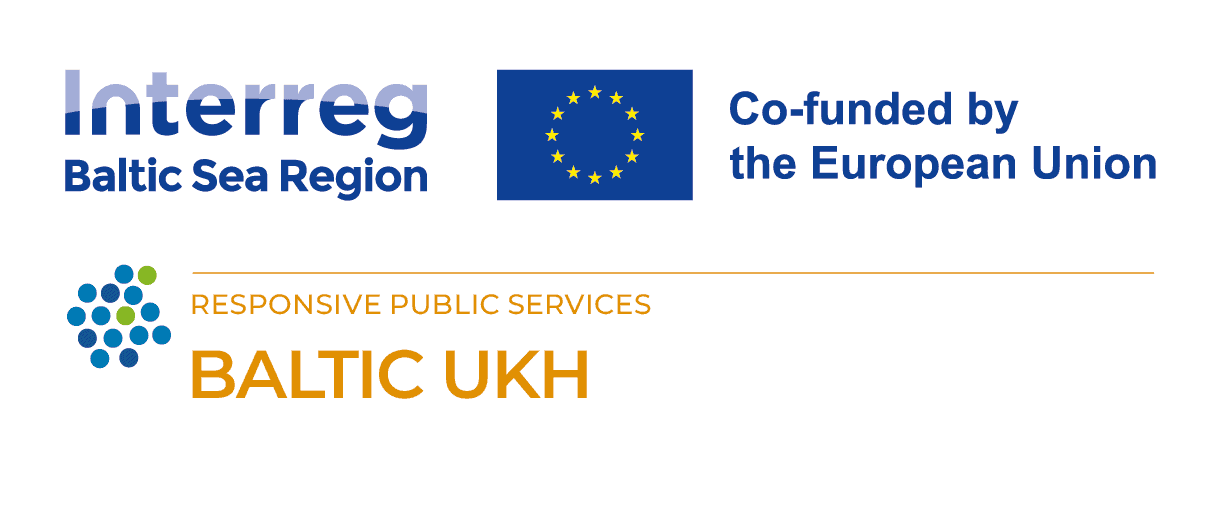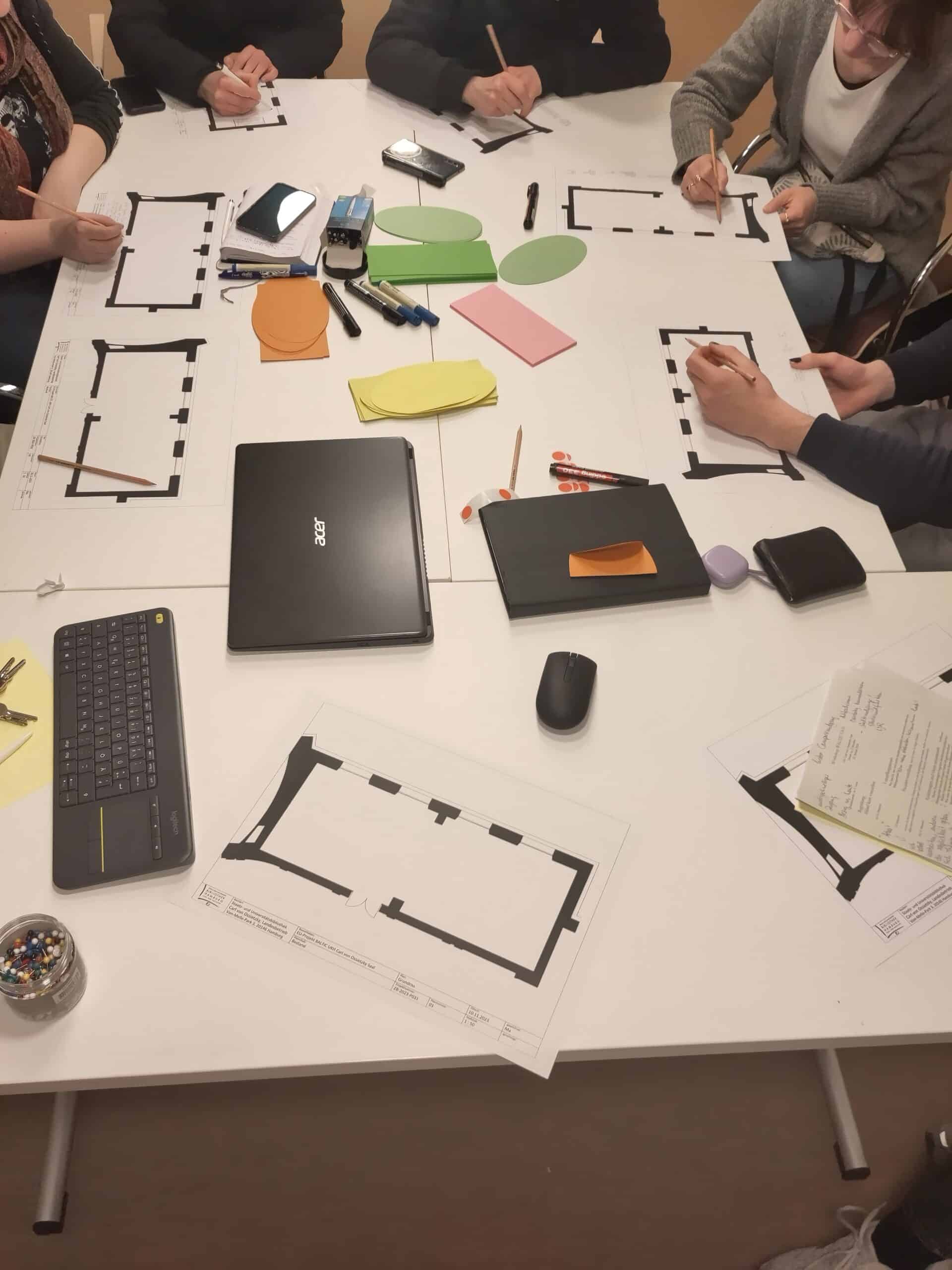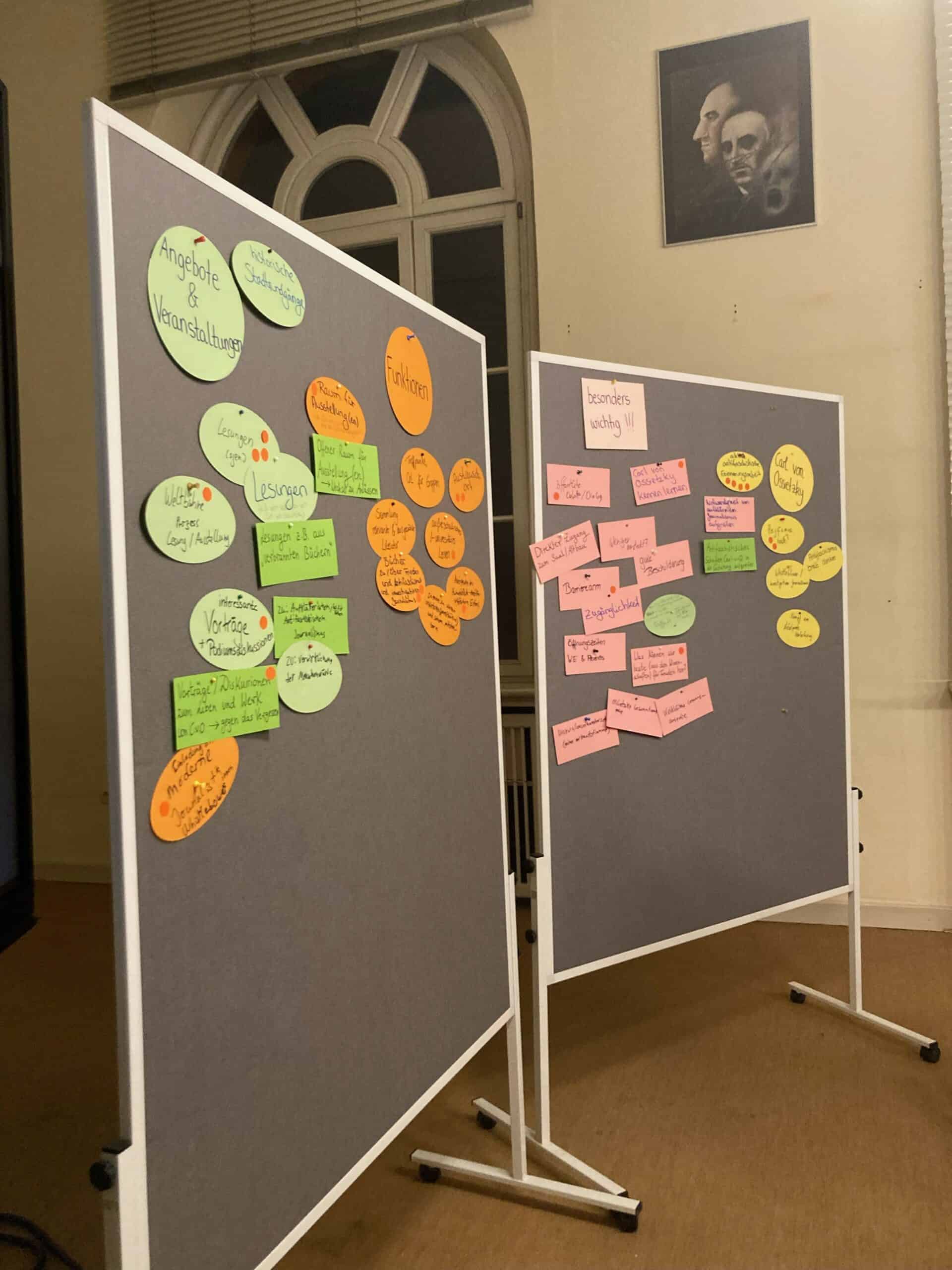
Engaging the public in the process of redesigning the Carl von Ossietzky Hall
14 February 2024
Tuesday afternoon 23 January a small group of people found their way to the historic part of the library building to visit the empty Carl von Ossietzky Hall and to take up the opportunity to participate in the process of its redesigning. Their backgrounds ranged from being students of humanities or sciences to artistic work in theatres and working with youth groups and historical political education.
The workshop was devided into three phases. The first brainstorming activity was to collect ideas on what different types of events could possibly be held in the space after the redesign process as well as on the functions the room should fulfil. The mainly younger participants stressed the need for a space to come together and connect or have a chat. In the second phase everyone got the option to prioritize the ideas with little adhesive dots to get a feeling what is most needed or wished for and to facilitate the evaluation process. Finally the worshop switched to a more creative method and blueprints of the space were handed out. With these blueprints as well as by moving through the space, it was possible to visualize ideas on how the new space should look like. Everyone got the chance to present and explain their blueprints, which turned into an interesting conversation showing both similarities as well as complementary suggestions among the group.
A commonality most of the participants shared was their commitment to pointing out the importance of Carl von Ossietzky not only as the namesake, but also as a crucial element within the new space. Ossietzky’s commitment to critical journalism as well as his antifascist stance should be remembered and therefore remain visible in the hall. Participants who were familiar with the old reading room also expressed nostalgic feelings towards this space and wished to integrate some of the old features, for example the framed pictures and the ceiling lights, into the new space.
After an interesting exchange of ideas, everyone agreed to participate in the evaluation process. The overall feedback was positive stressing the importance of involving citizens in the (re)design of public spaces.







